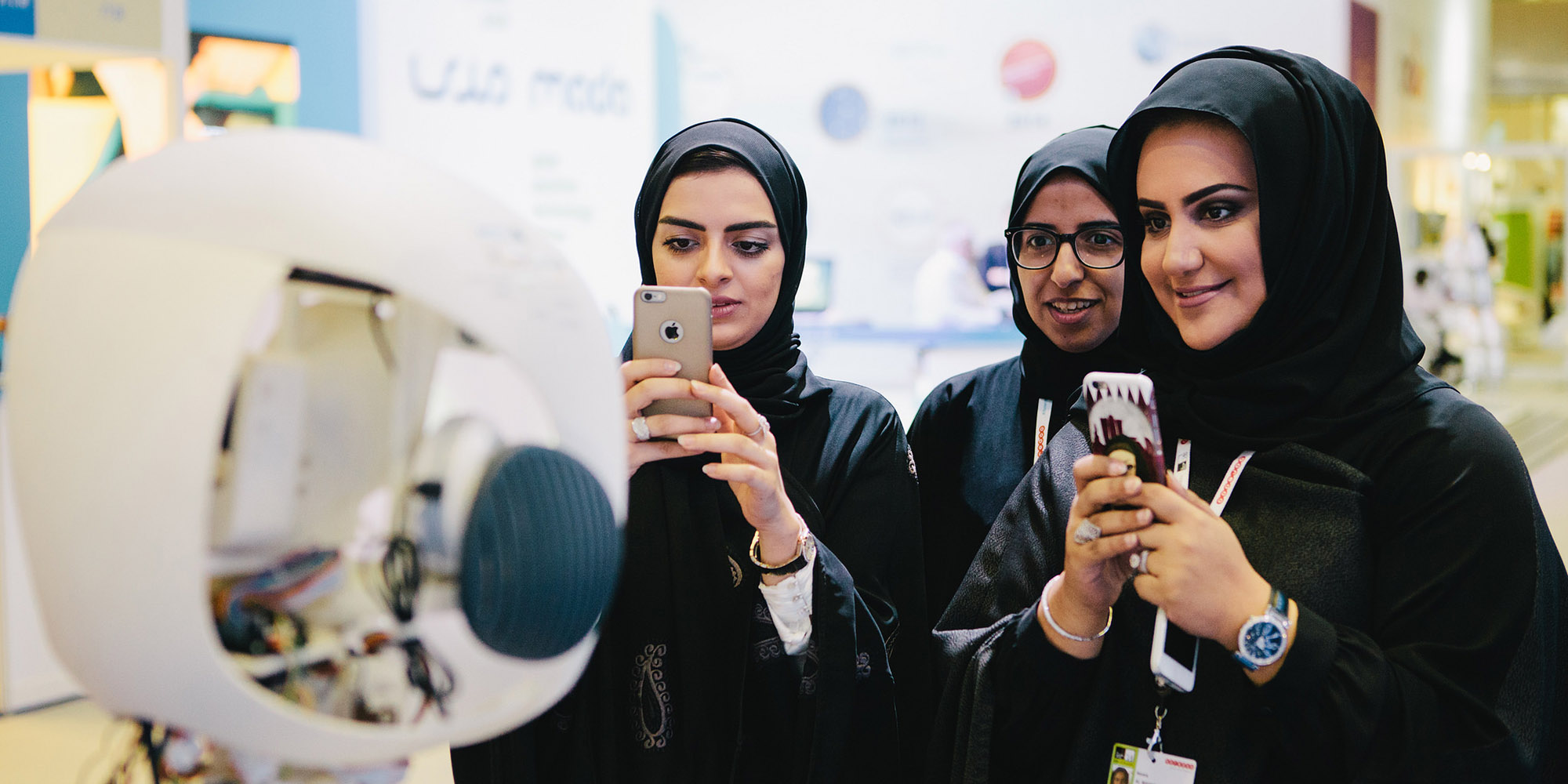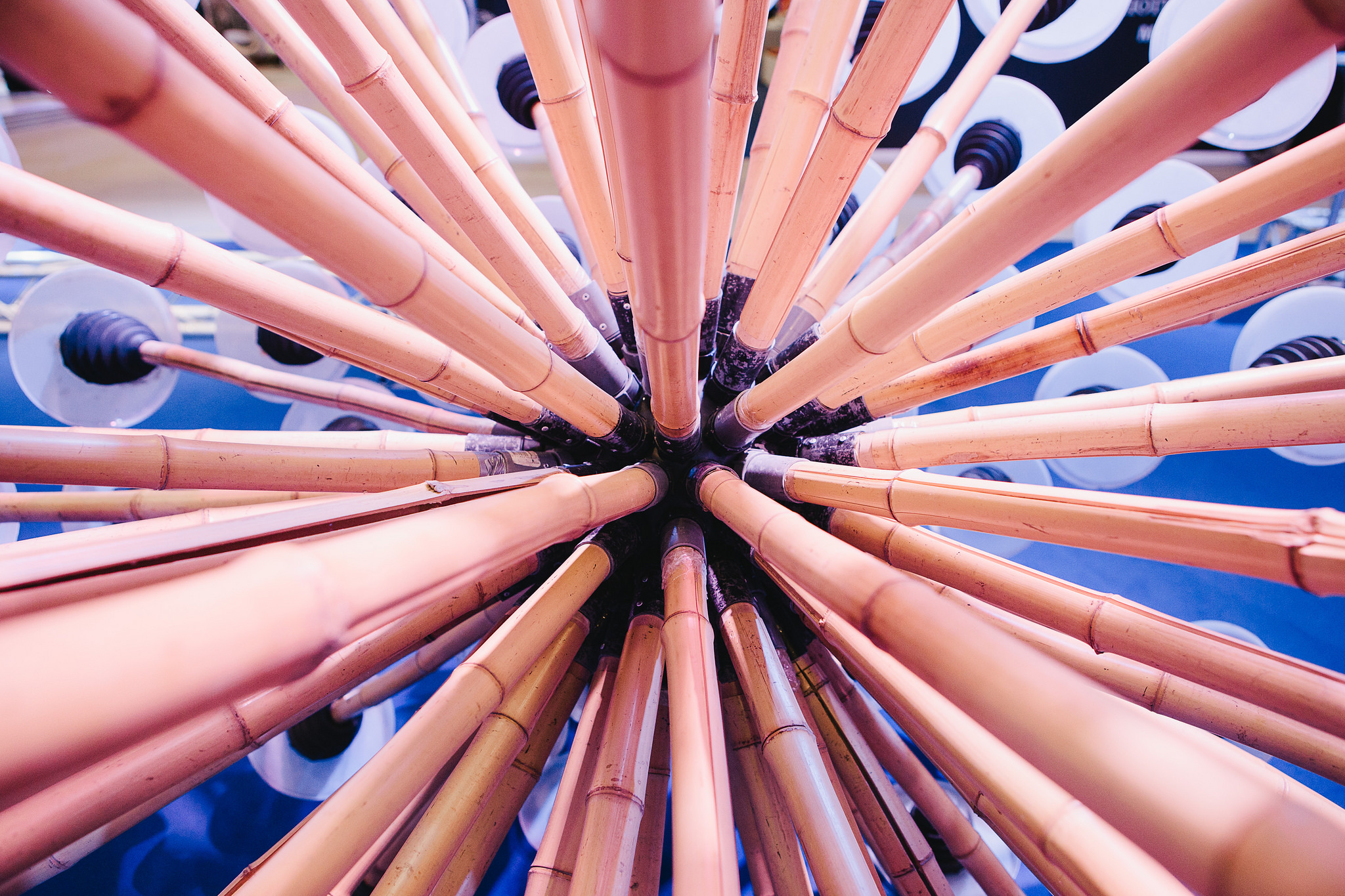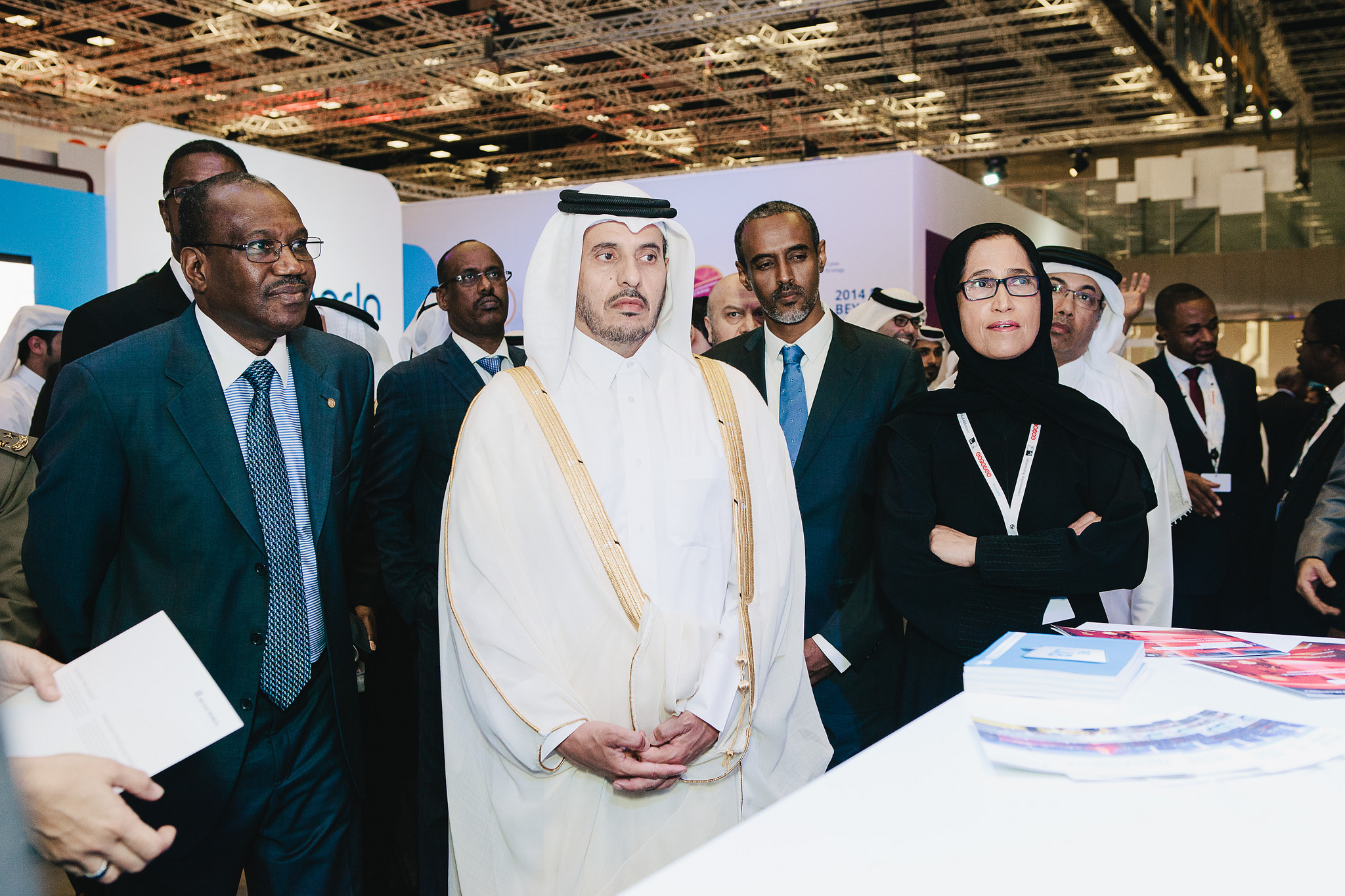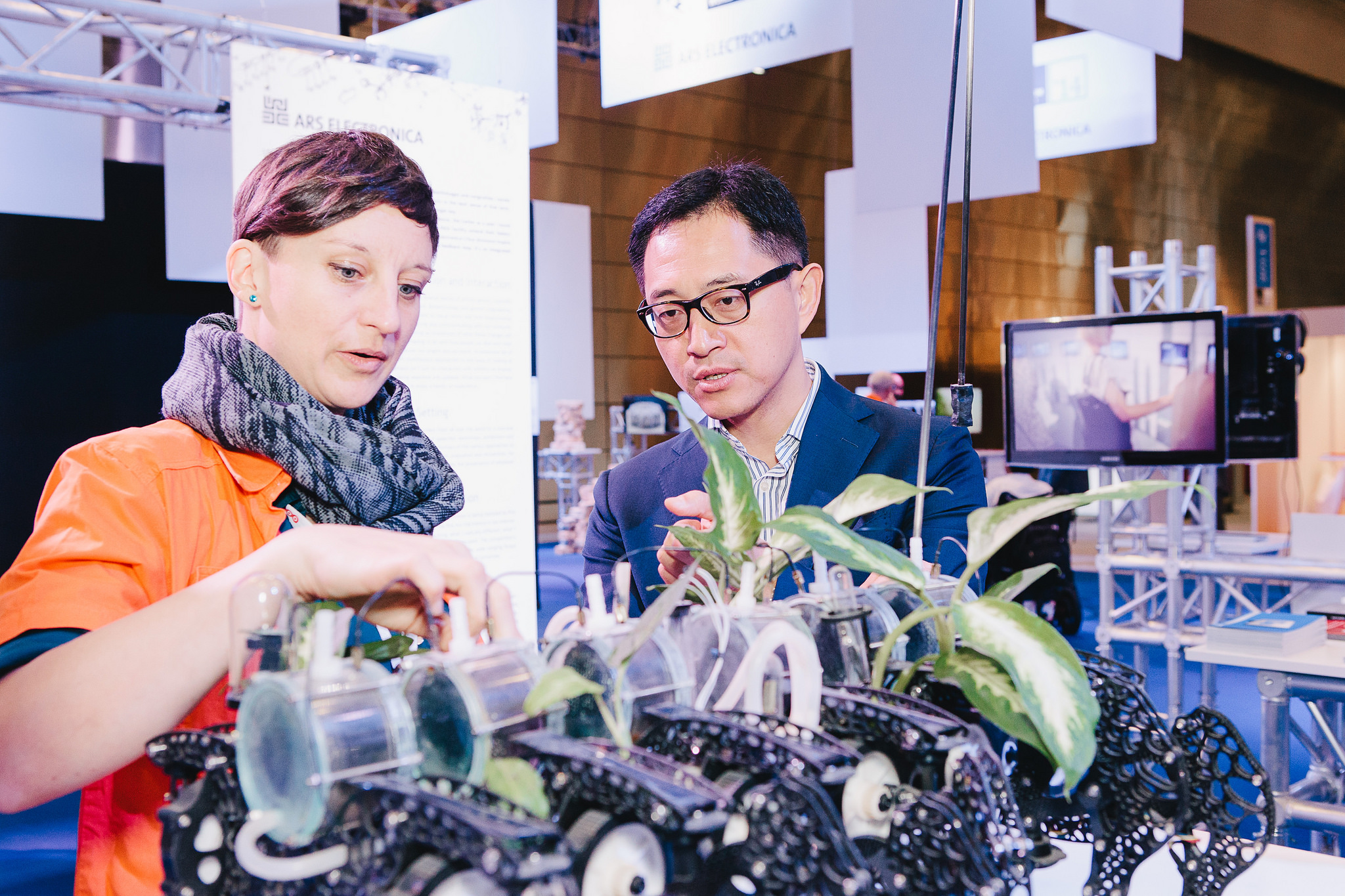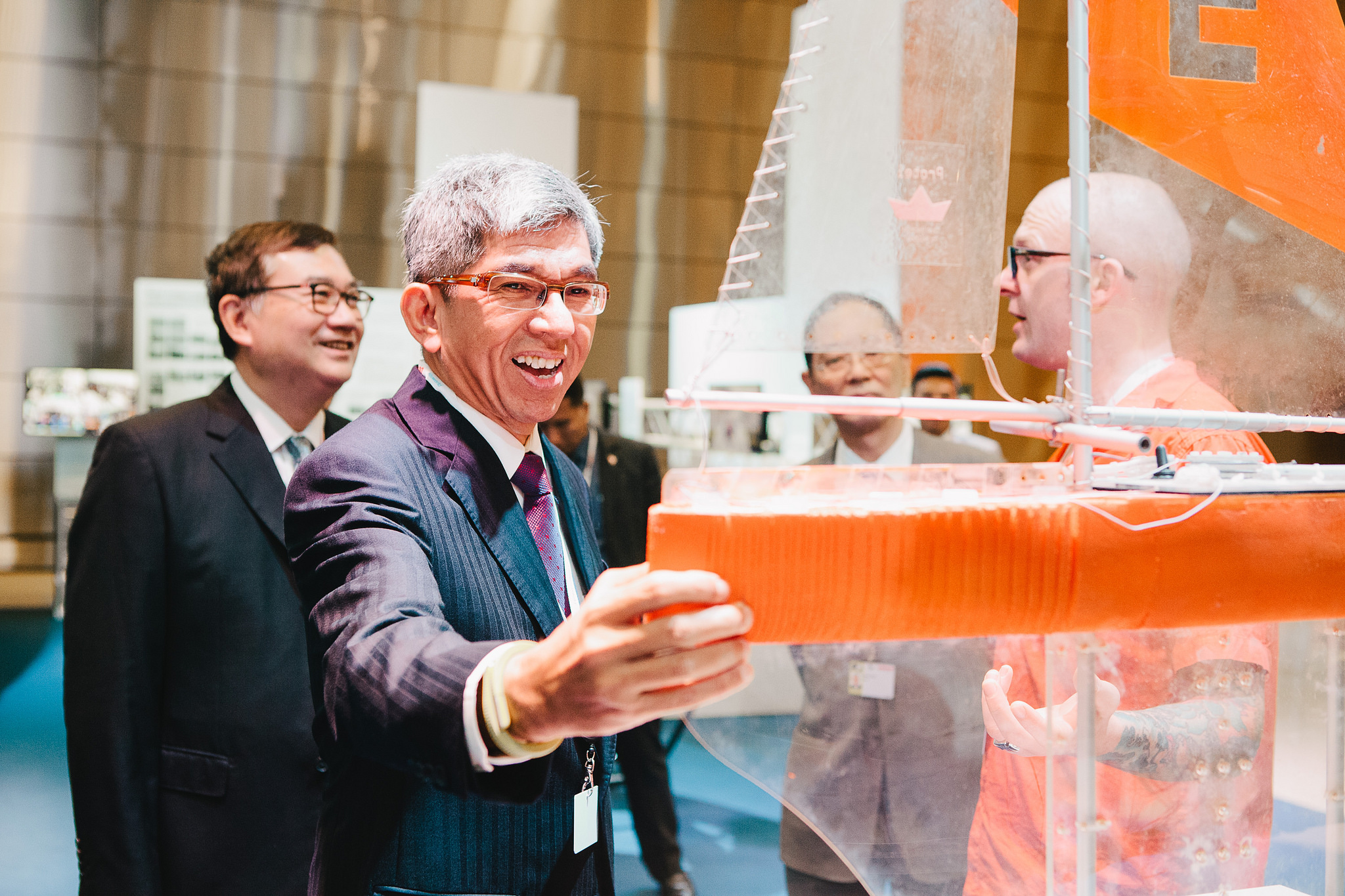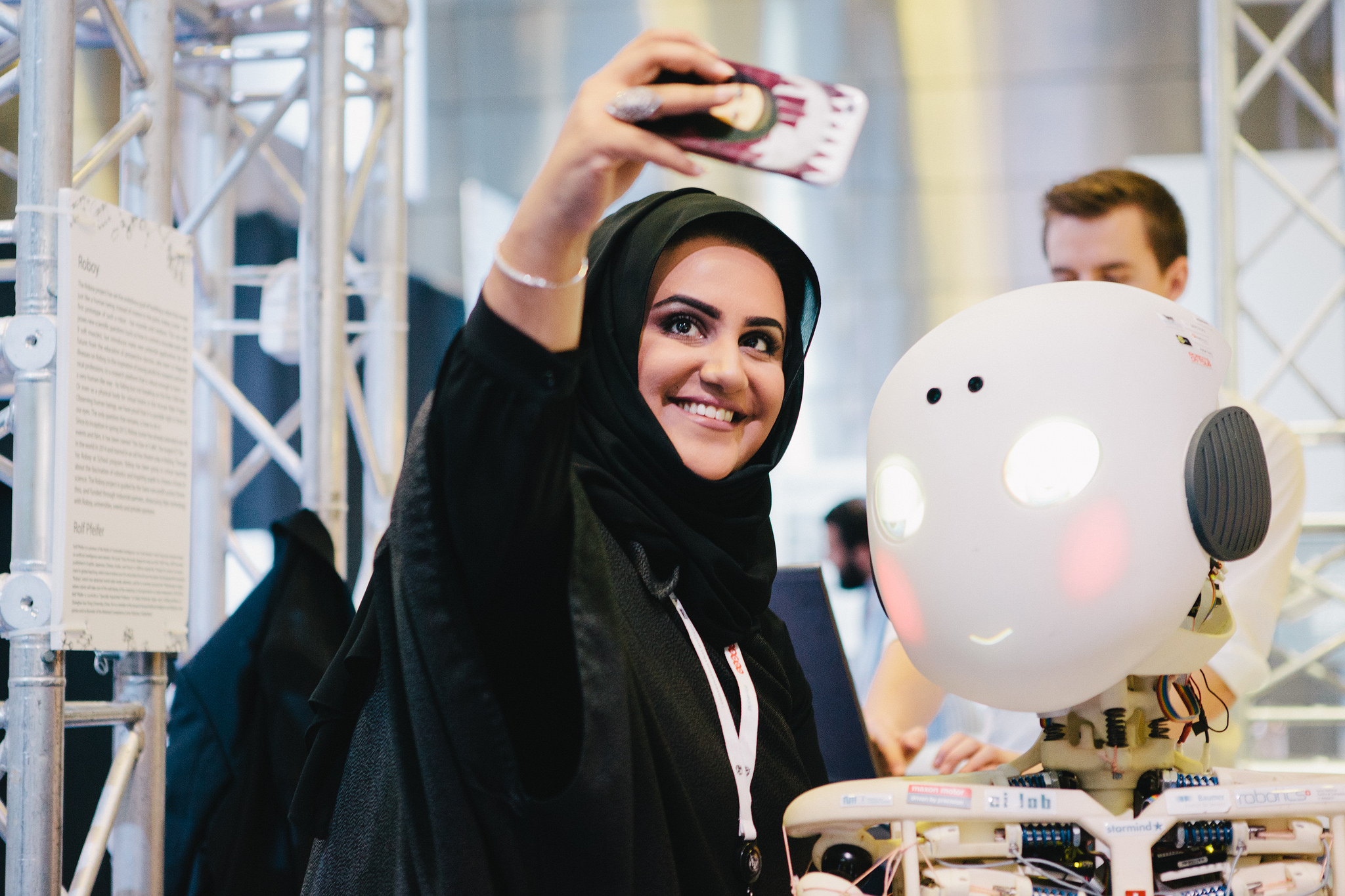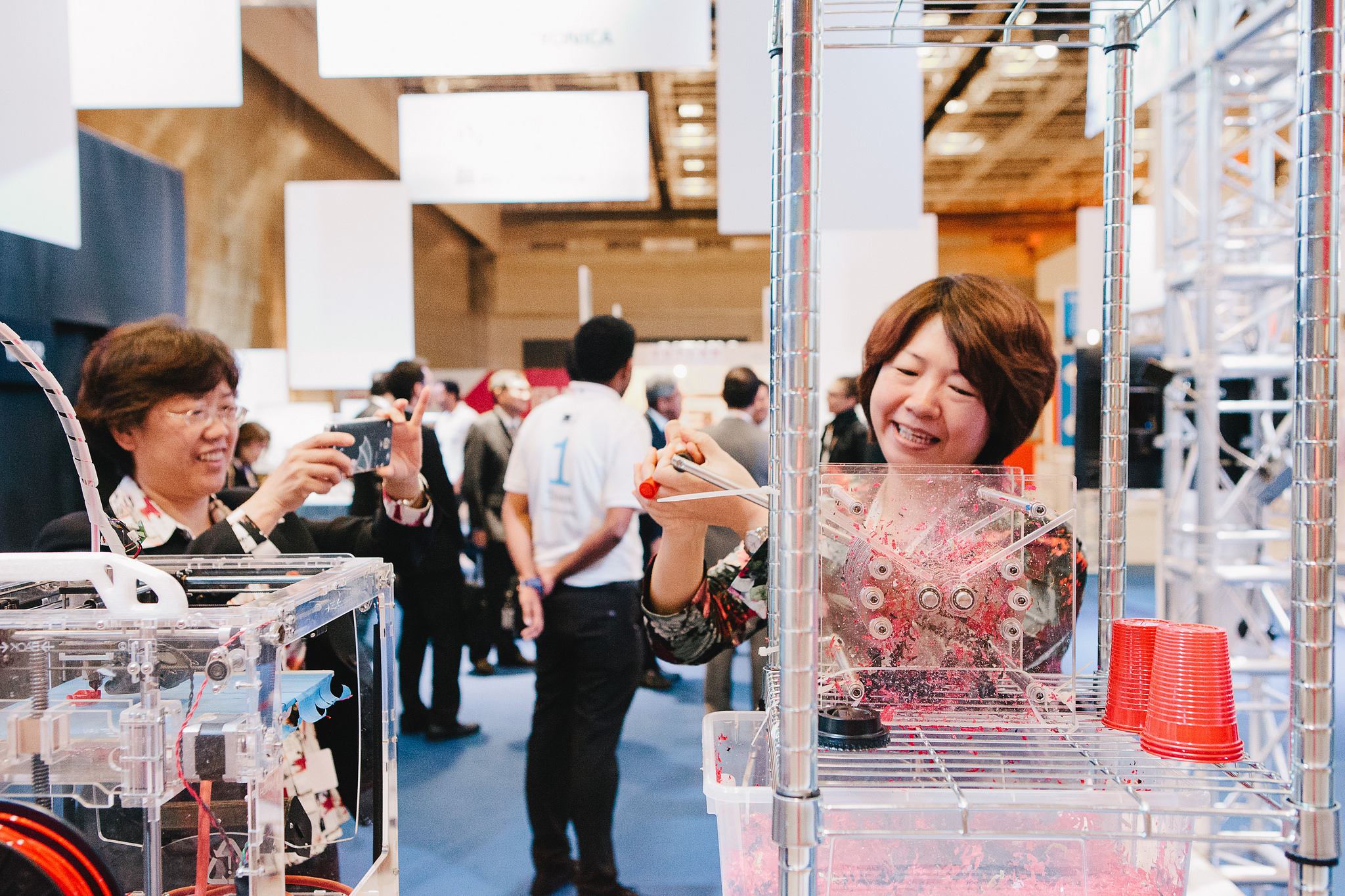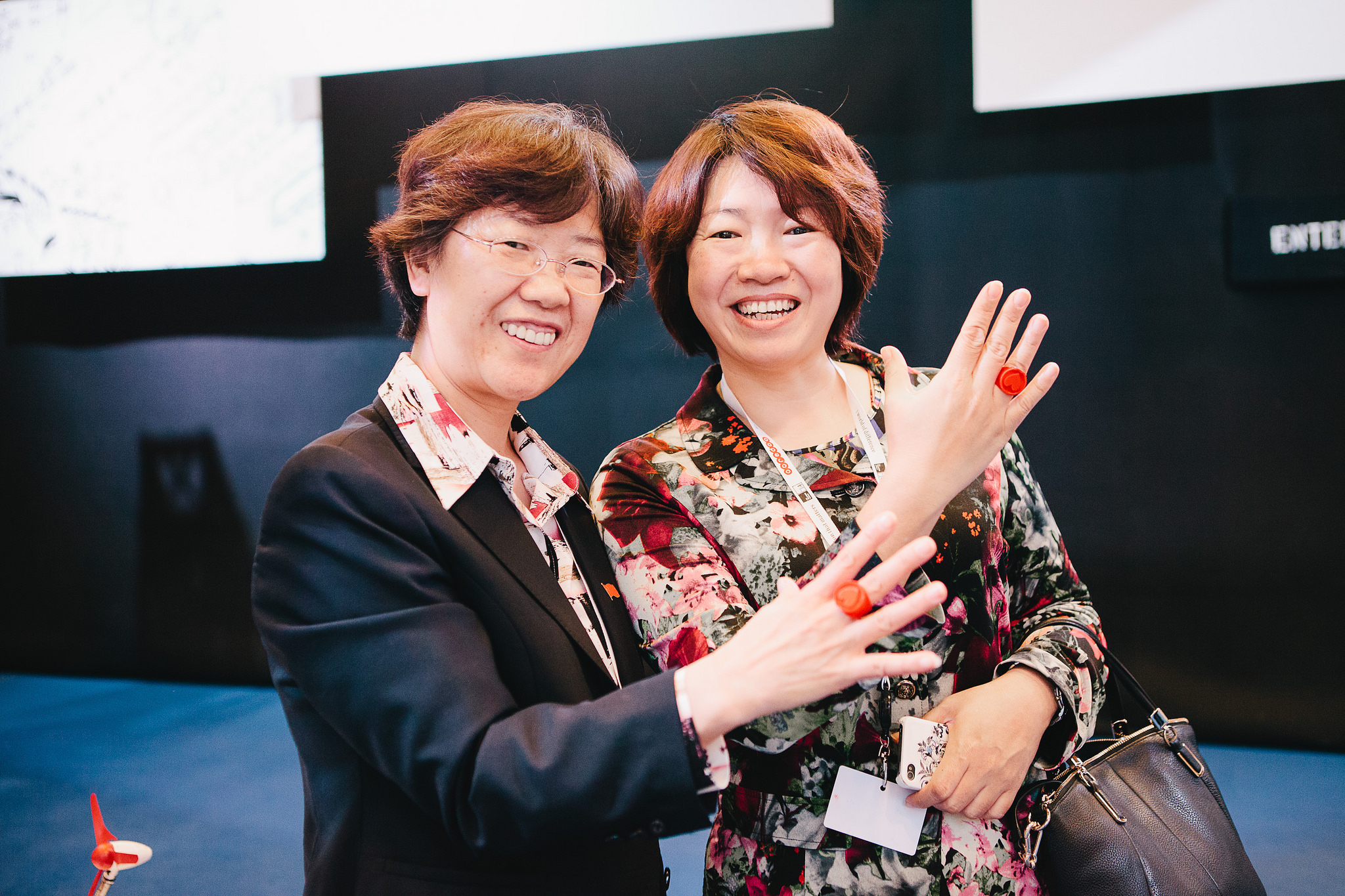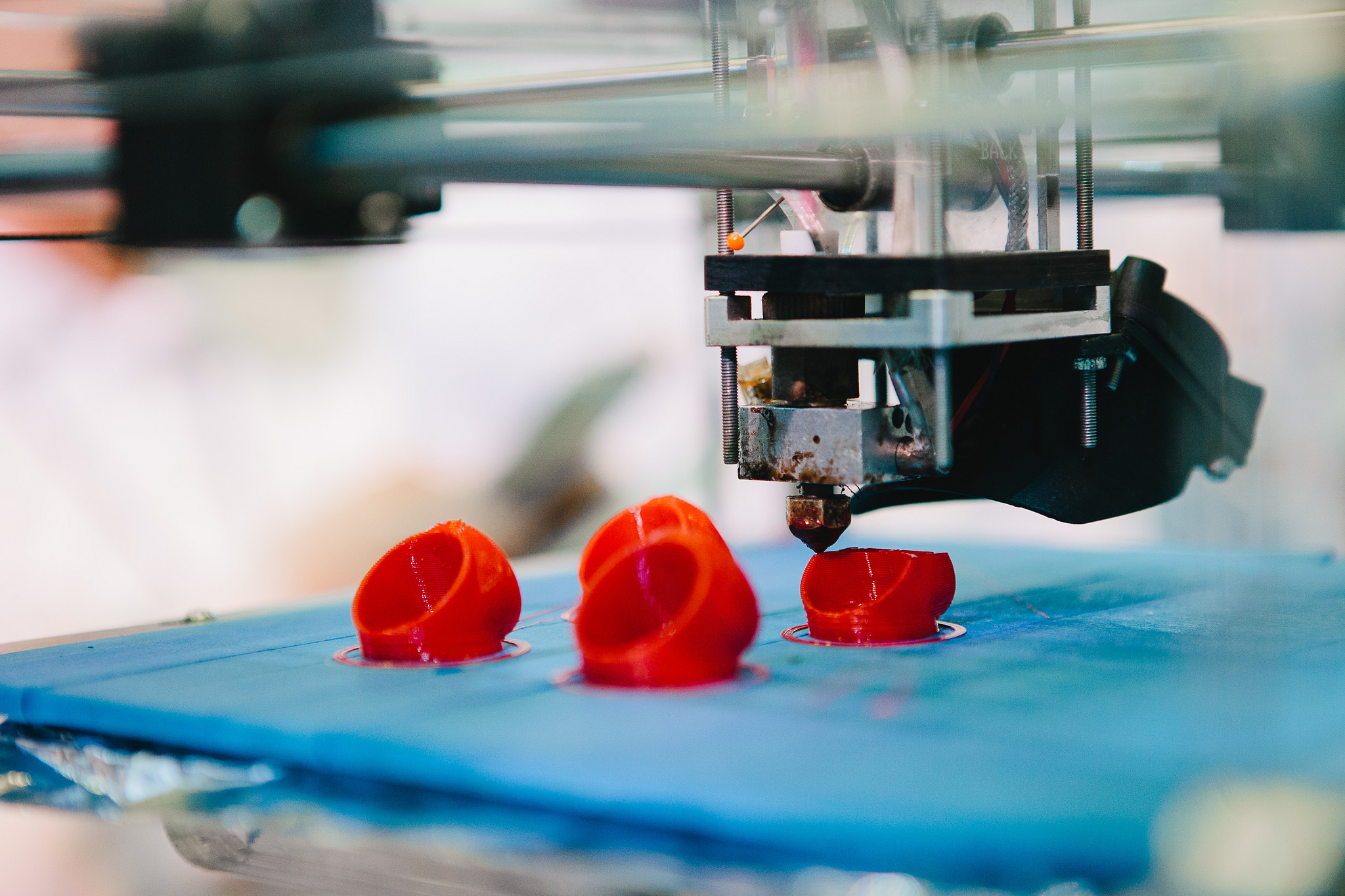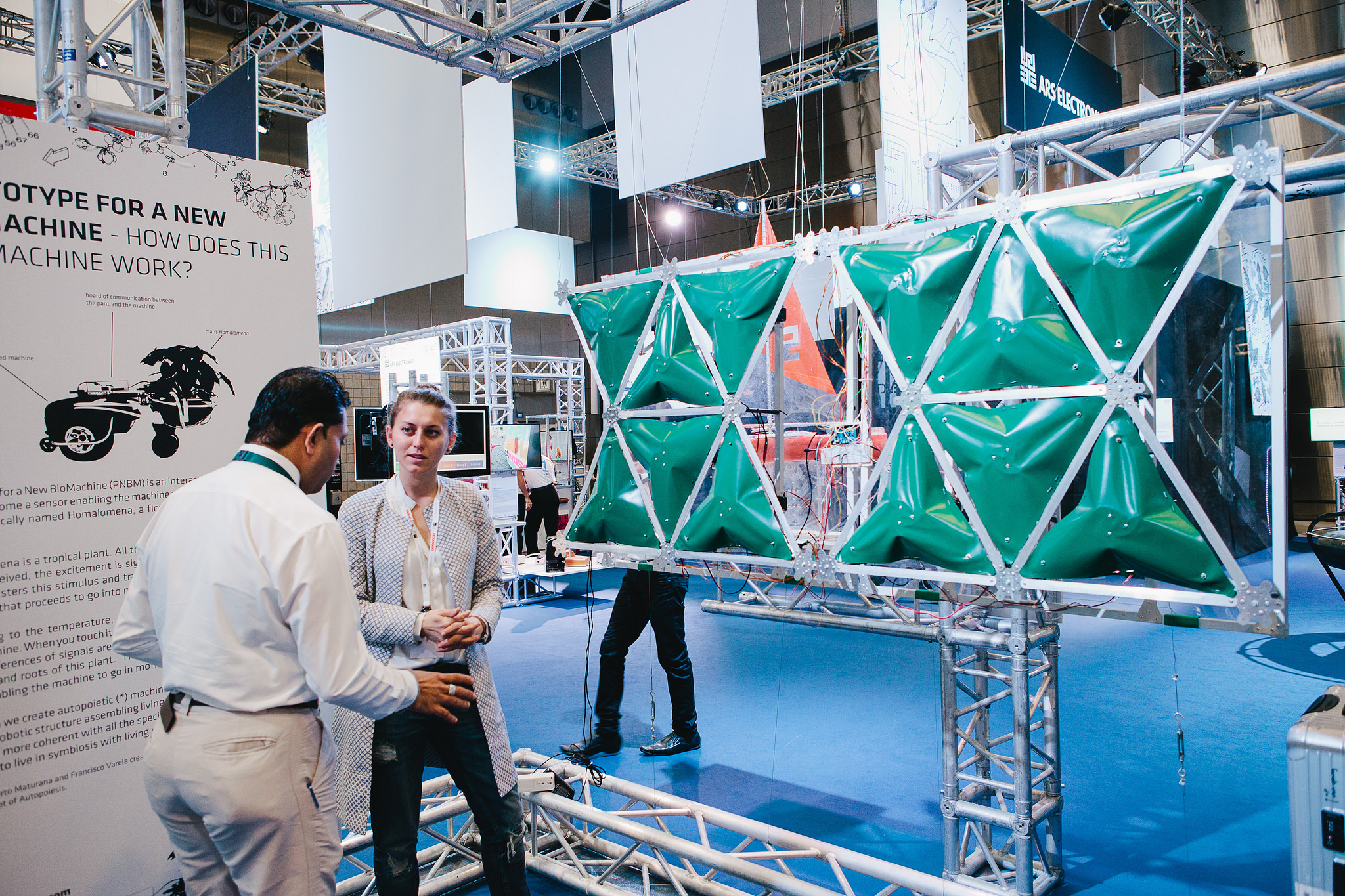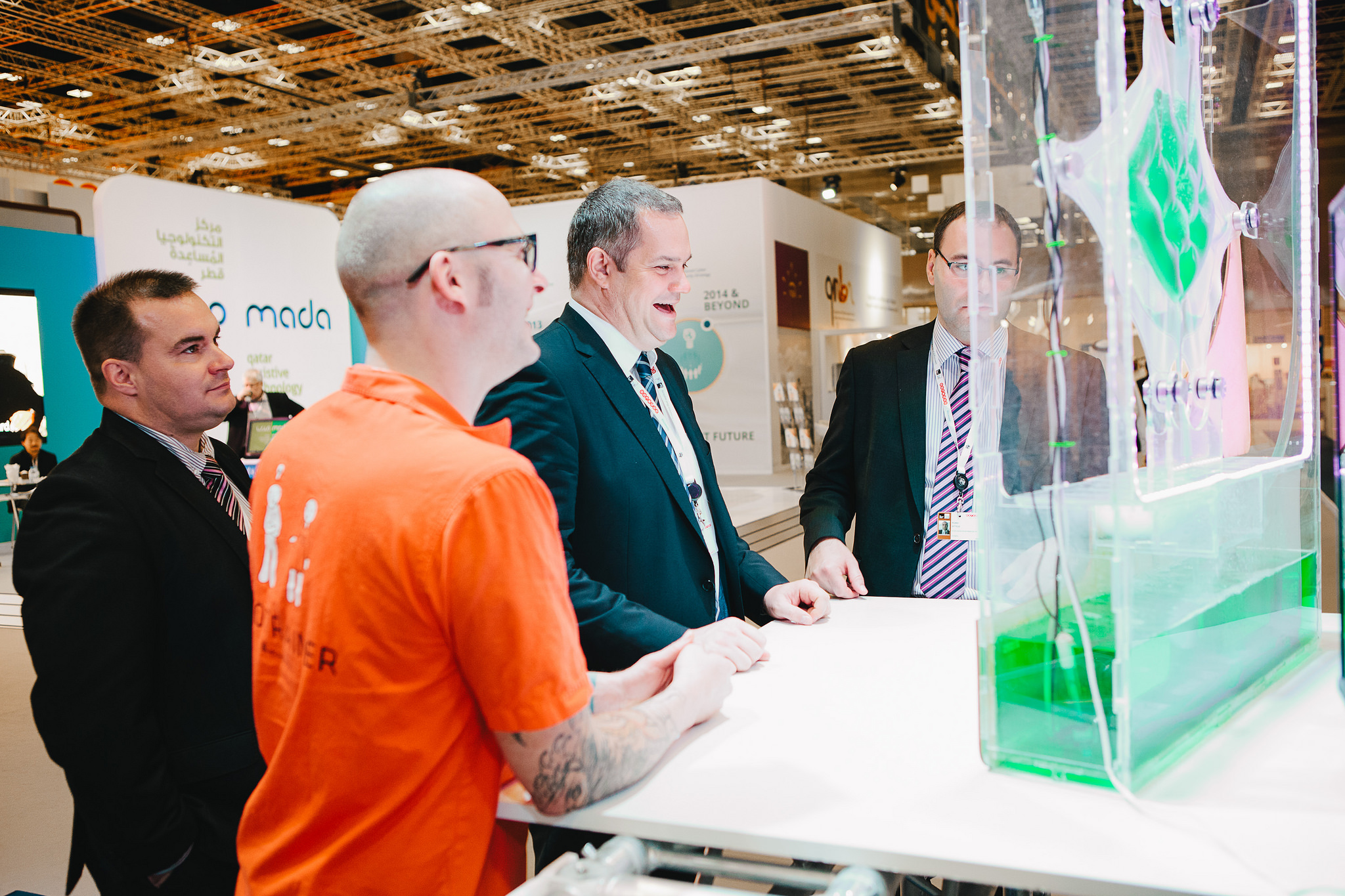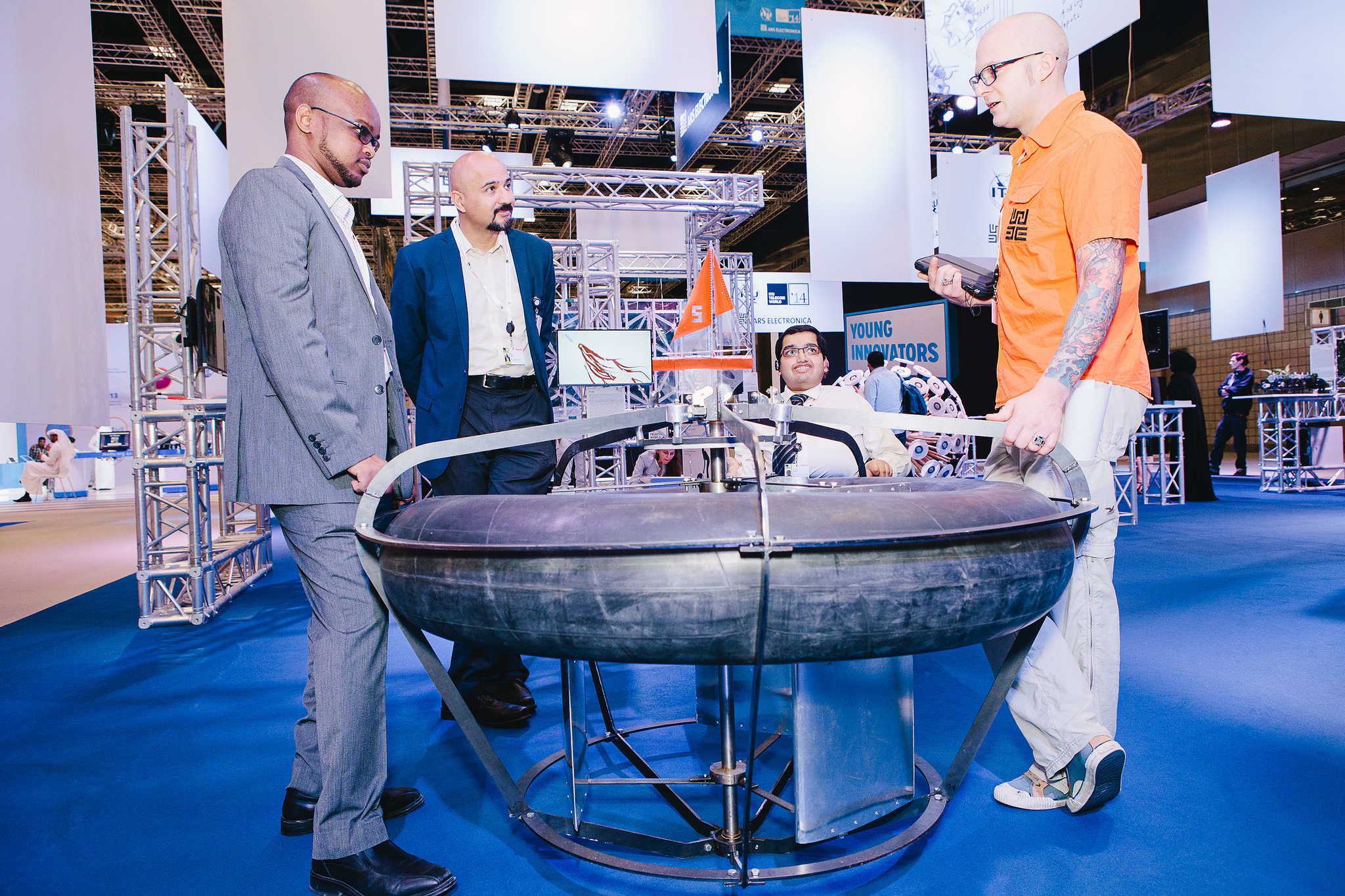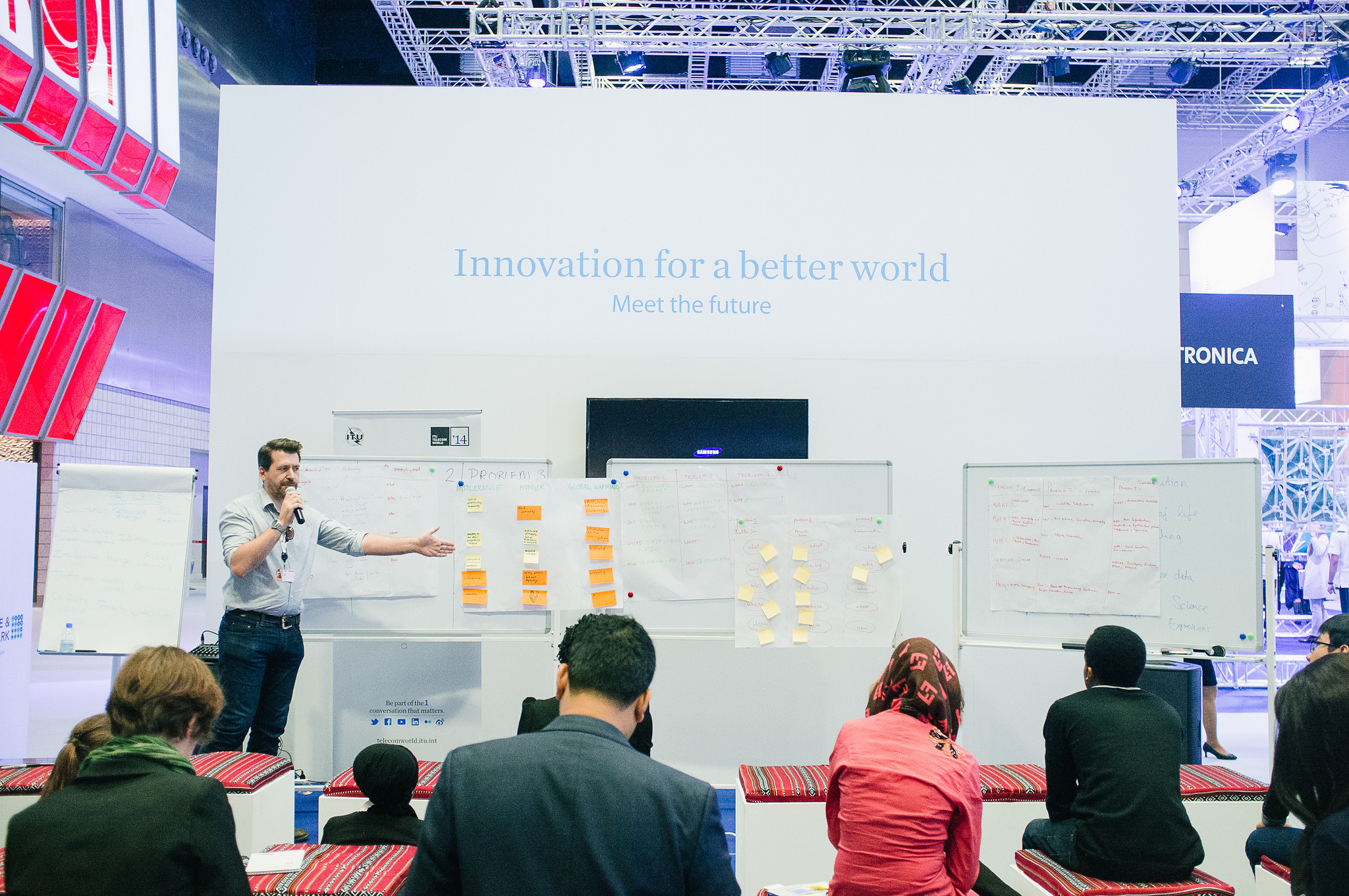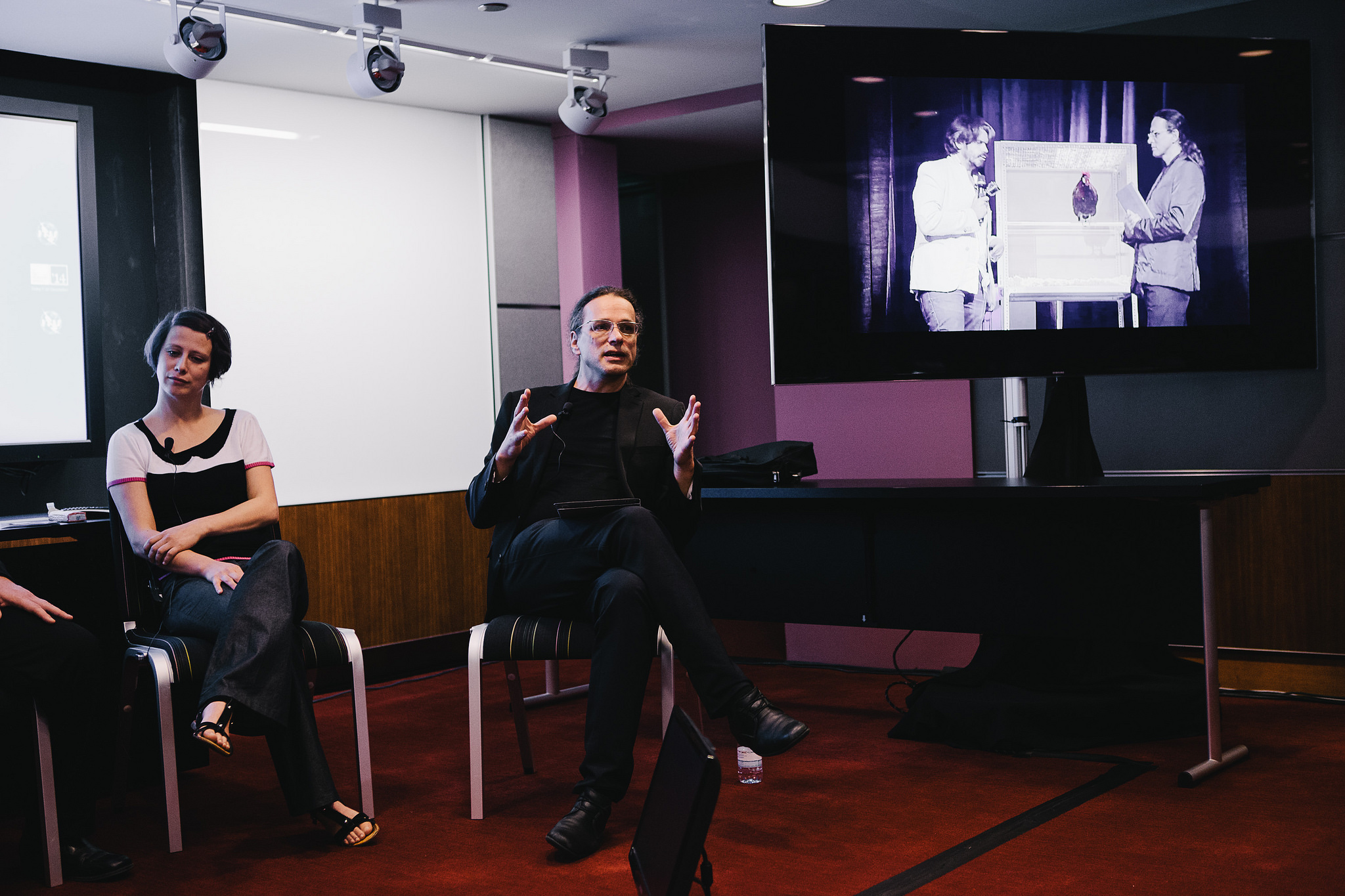This is the second time that Ars Electronica was invited to stage an exhibition at ITU Telecom World. In an approximately 200-m2 exhibition space, “The Lab” showcased a selection of innovative projects at the interface of art, technology and society that were grouped into four thematic clusters: better and fairer coexistence; thinking about and striving to come up with alternatives; design with a (social) message; and the arbitrariness of systems.
Set-up
The site of this year’s ITU Telecom World was the Qatar National Convention Centre located on the western edge of the City of Doha. This imposing edifice’s organic structure resembles a root system or a brachiated network, and has already been singled out for recognition with numerous prizes: “Best Events Venue” from Middle East Event Awards 2013, “Middle East’s Leading Exhibition & Convention Centre” from World Travel Awards and “Best Congress and Convention Centre, Middle East” from Business Destinations Travel Awards.
Several Ars Electronica staff members (top left: Stefan Brandmayr with architect Jürgen Haller) and the artists themselves helped set up the projects presented in “The Lab.”
Artist Cecilia Lalatta Costerbosa, creator of the “Parametric Hybrid Wall,” worked together with her brother Carlo to set up her prototype. The two Italians took advantage of their stay in Doha by combining the presentation of Cecilia’s work with their first vacation in the Arabian region.
Infotrainers Juliane Leitner, Phil Huemer (pictured) and Florian Voggeneder spent considerable time viewing and analyzing each work and discussing their impressions together to do the best possible job mediating audiences’ encounters with the content. One of the exhibition’s main highlights was the “Mine Kafon” project by Afghan artist Massoud Hassani.
Innovative Projects at the Interface of Art, Technology and Society
Ars Electronica is proud to have received an official visit by Dr. Hamadoun Touré, Secretary General of the International Telecommunication Union (ITU), the Prime Minister of the State of Qatar, His Excellency Sheikh Abdullah bin Nasser bin Khalifa Al Thani and especially Dr. Hessa Al Jaber. She is only the third woman in the position of a minister and the first, who is responsible for the Ministry of Information and Communications Technology in Qatar. That this position, in a country like Qatar, was equally stuffed with a woman is something very special.
The “LillyBot 2.0” project by Cesare Griffa provided an excellent entrée into an explanation of the exhibition’s concept.
Oscar Ekponimo, a visionary entrepreneur and innovator, is the founder of FoodRing in Nigeria. As a software developer, his vision is to enhance technologies that visualize cultures, to redefine industries and simultaneously to contribute to sustainable development. During this chat, Mohammed A. ElRaffie elaborated on CORD, his company active in science communication that takes an edutainment approach to providing youngsters with hands-on experience building robots.
Gilberto Esparza’s work “Nomadic Plant” was a big-time attention-getter. Installation visitors had a wide variety of questions about the implementation of the project.
Minister of Communication and Information, Dr. Yaacob Ibrahim, also paid a call on “The Lab,” and was particularly enthused about the “Protei” project.
“Roboy” didn’t just hang around Ars Electronica’s booth; he was also a very welcome guest at the other presentations, which he visited almost on a daily basis with his “old man,” Rolf Pfeifer.
One of the most popular attractions was the “Perpetual Plastic Project” by Better Future Factory. Laura Klauss and Gaspard Bos from the BFF crew joined us in Doha to handle enthusiastic visitors’ countless requests for more information about their project.
We were delighted to run into Laina Greene, founder and CEO of Green Energy Technology and Infocommunications Technology (GET-IT) as well as a former Prix Ars Electronica juror in Doha. Together with Monique J. Morrow, CTO consulting engineer at Cisco Systems, and Laura Klauss of Better Future Factory, they proudly showed off their self-constructed rings designed to symbolize the empowerment of women worldwide.
“Design with a Mission” was the title of the category subsuming projects that not only elaborate on design in connection with its functionality but also convey content with a social agenda.
One of these projects was the “Parametric Hybrid Wall” by designer Cecilia Lalatta Costerbosa. Not only does her work succeed on the aesthetic level in that the walls fold and can become transparent in response to input delivered by sensors; the production of them is also very well thought out—the artist opted exclusively for easily affordable materials and open-source manufacturing methods.
To create “LillyBot 2.0,” Italian artist Cesare Griffa experimented with a type of algae that converts carbon dioxide into oxygen. Visitors encountering his work are prompted to consider some important topics: the environment, habitats and sustainable architecture.
In the spirit of “thinking in terms of alternatives,” Infotrainer Phil Huemer presented Mobile Hydro’s “Rotor” project, a mobile mini-hydroelectric plant to produce electricity simply in off-the-grid regions. The approach: use conventional materials to construct the rotor in order to keep the cost of generating power as low as possible.
[youtube=https://www.youtube.com/watch?v=__wooqTappc]
Al Jazeera’s Tarek Bazley was one of the media outlet representatives who covered the projects exhibited in “The Lab.”
Future Innovators Summit
Immediately adjacent to Ars Electronica, the ITU showcased its Young Innovators Competition. The six winners of the previous year’s ITU Telecom World competition participated in the Future Innovators Summit at the 2014 Ars Electronica Festival. This year’s winners of the Young Innovators Competition were presented in Doha.
Creative Conversations
Creative Conversations at the ITU Telecom World 2014 brought together artists, social entrepreneurs, industry leaders, engineers and digital thought-leaders to explore how the intersection of technology, art and business is changing the world.
Ars Electronica Artistic Director Gerfried Stocker was also on hand. His topic: “Co-Creation in the Innovation Ecosystem”
Die Heimreise
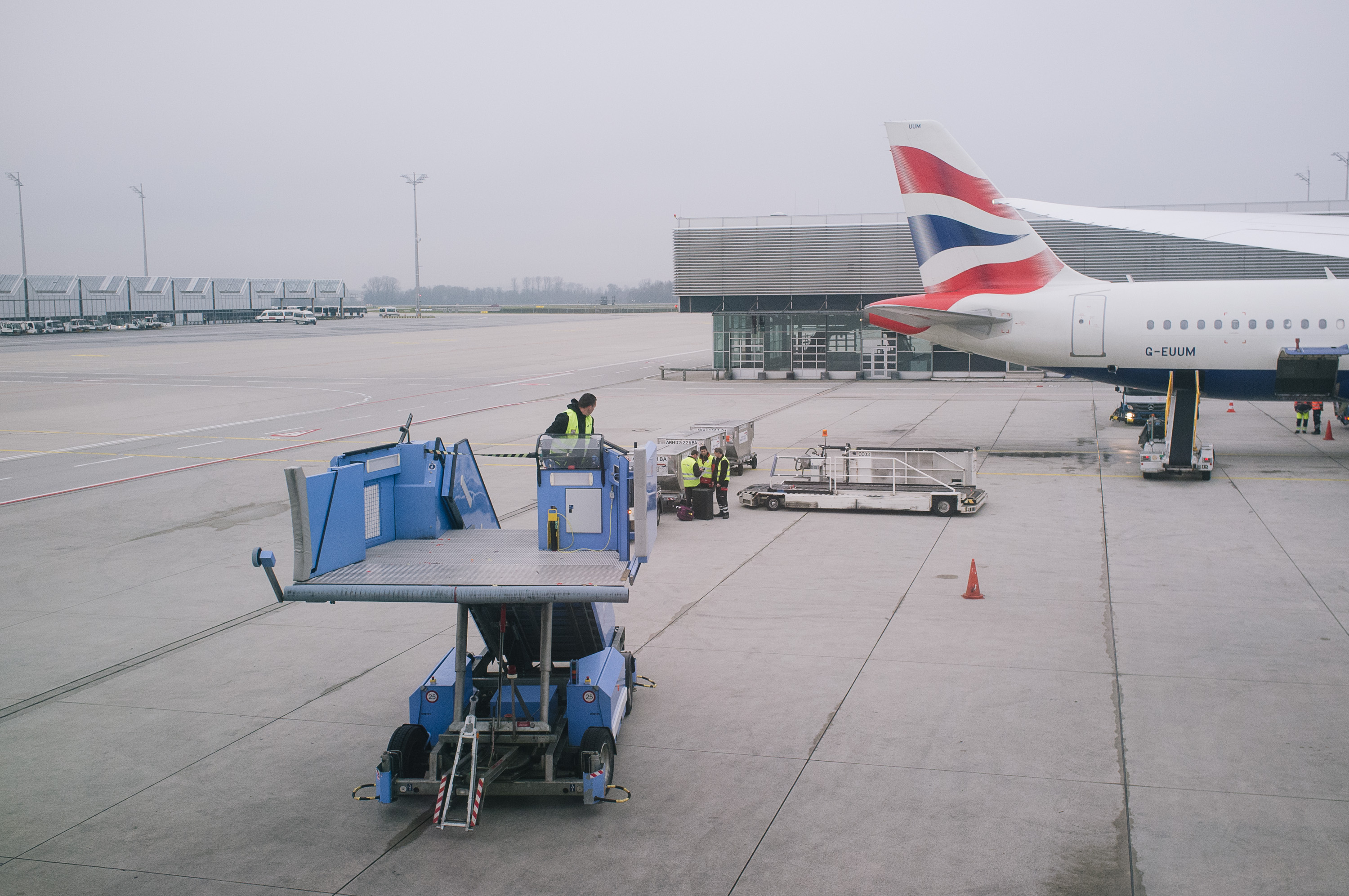
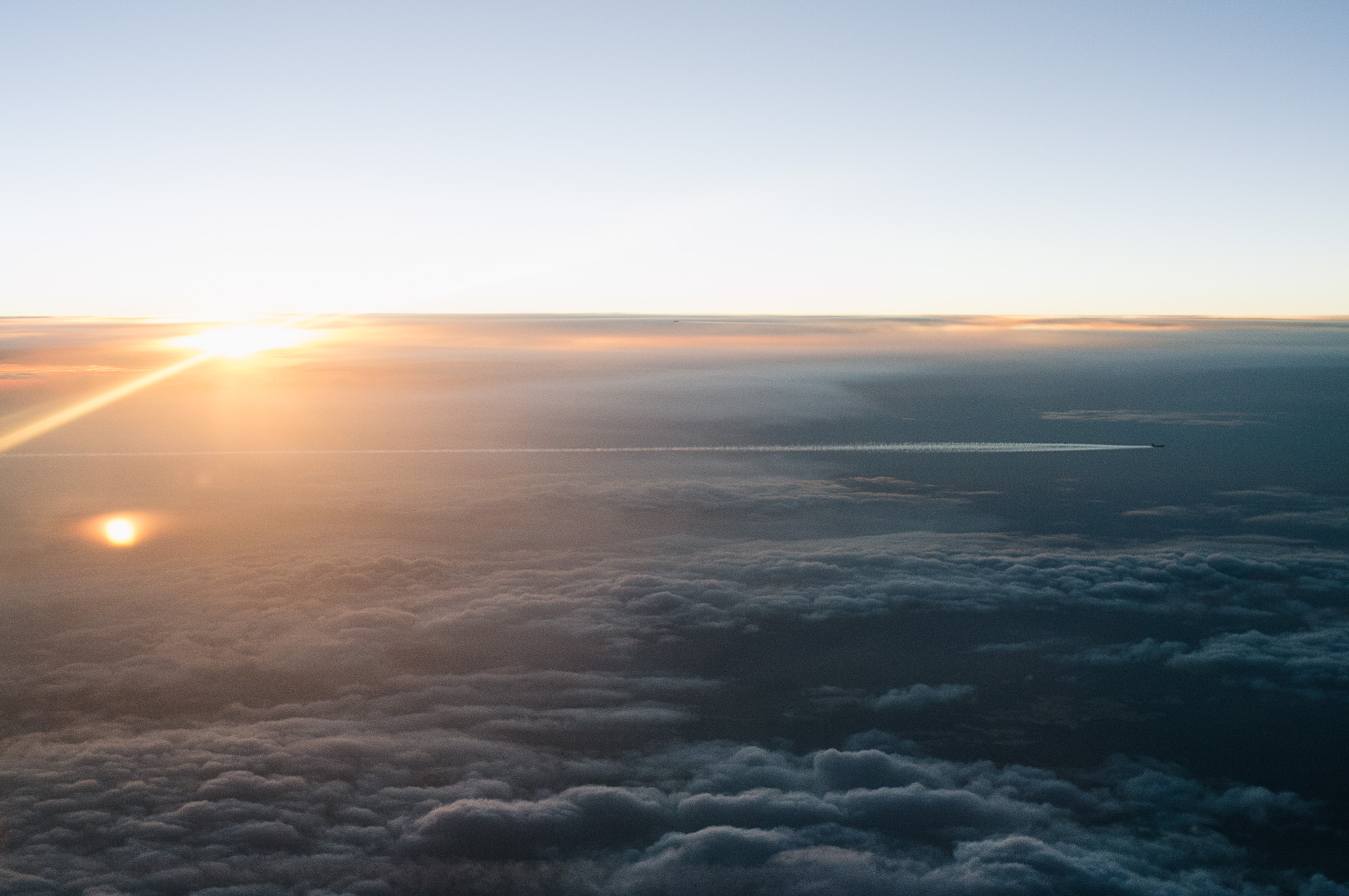
Find more information about “The Lab” and detailed project descriptions:
http://export.aec.at/itu2014/en
Find more pictures:
https://www.flickr.com/photos/arselectronica/sets/72157649681792435/
